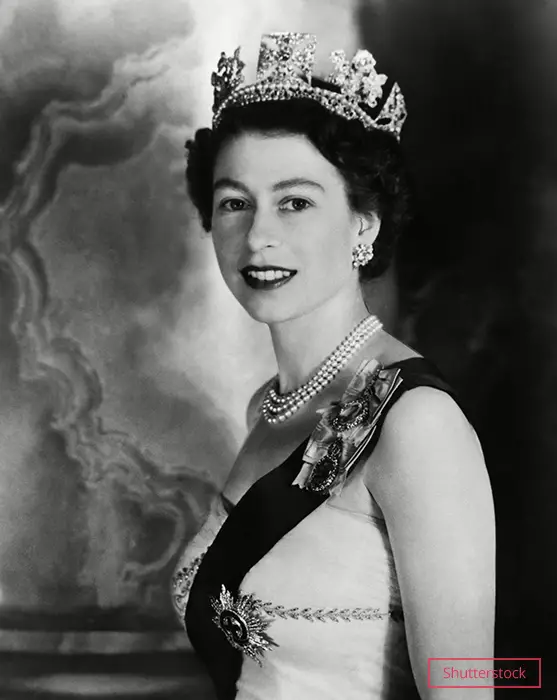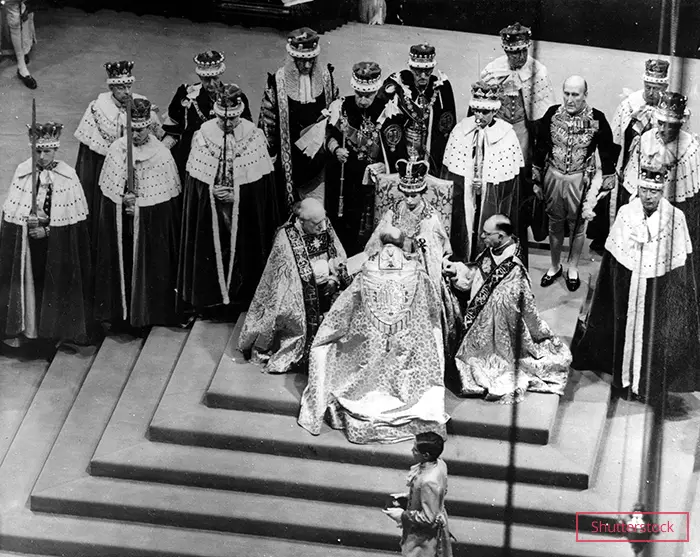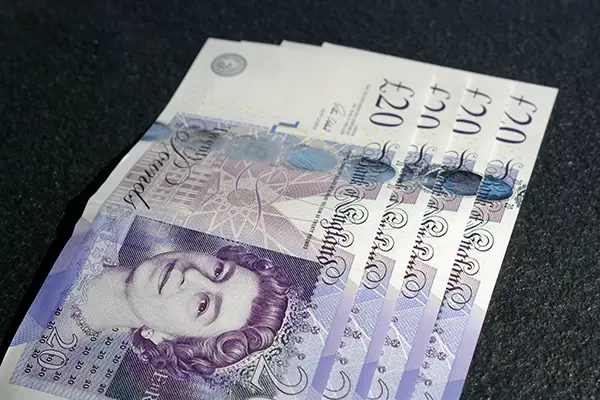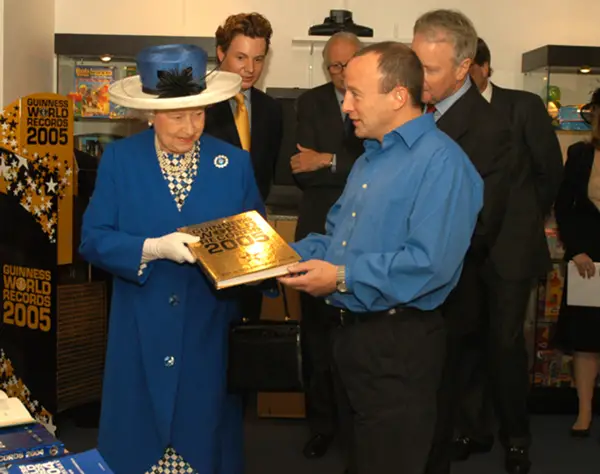Queen Elizabeth II: Longest-reigning queen
Queen Elizabeth II, the longest-reigning monarch in British history (second in the world overall), became Queen of the United Kingdom and the Commonwealth realms on 6 February 1952, following the death of her father.
Her official coronation took place on 2 July 1953, kickstarting a reigning period that would grow to worldwide fame, when she earned several records.
The beginning of a record-breaking reign
Born 21 April 1926, Elizabeth Alexandra Mary was originally the third in the line of succession to the British throne.
At the time, her grandfather King George V ruled over the country and he would continue to do so until his death, in January 1936.
After being severely wounded during World War I, the monarch suffered from chronic bronchitis and, over time, the smoking-related problems further damaged his already declining health.
As per tradition, the king's oldest son and Elizabeth's uncle, Edward, succeeded him and ascended to the throne with the name of King Edward VIII.
But Edward's ruling period went on to be a short-lived reign that would, in its brevity, forever change the perception of modern monarchies.
The King abdicated in December of the same year after standing by his controversial relationship with the twice-divorced American socialite Wallis Simpson: a relationship that would be covered by tabloids worldwide, generating a scandal that resonated across the country.
The couple subsequently moved to France. In June 1937, Edward married Simpson at Château de Candé, a chateau of the Indre-et-Loire, near Tours.
The two spent their lives in France with no children, and their marriage continued until Edward died in 1972 at the age of 77.

Following her grandfather’s death and the surprising abdication of her uncle, Elizabeth's existence took an unexpected turn as she became the heir presumptive. At the time, she was only 10 years old.
Her father, born Albert Frederick Arthur George of York and King George V’s second son, was crowned King of the United Kingdom and the Dominions of the British Commonwealth at Westminster Abbey on 12 May 1937, taking the royal name of George VI.
In 1934, at the wedding of Princess Marina of Greece and Denmark to Prince George, Duke of Kent, a young princess Elizabeth met for the first time her future consort, Prince Philip of Greece and Denmark.
After a second meeting in 1937 and a third in 1939, the royal couple began exchanging letters.
The couple got engaged in 1947 and, only four months after the announcement, they tied the knot with a majestic wedding ceremony that took place at Westminster Abbey in November.
Still a princess at the time, Her Majesty was the 10th member of The Royal Family to be married at Westminster Abbey. The ceremony was officiated by the Archbishop of Canterbury and the Archbishop of York with 2,000 guests in attendance.
On 6 February 1952, at 25 years old, Her Majesty Queen Elizabeth II took on St Edward’s Crown after the untimely death of her father, King George VI.
The King died at Sandringham House, aged 56, due to a coronary thrombosis.
Queen Elizabeth II's official coronation took place on 2 June 1953. It was the first coronation to be televised, winking to a new age and a reign that was rapidly evolving, and her choice proved to be both a bold gamble and a great success for a monarchy that was testing the waters of a modern world.
A total of 27 million people in the UK eagerly followed the black-and-white ceremony on television, and 11 million listened on the radio.
The same year, the Queen and Prince Philip departed on a round-the-world tour, covering 13 countries and over 40,000 miles (64,000 km) in seven months.
Did you know that Queen Elizabeth II wasn’t the only one to sit on the majestic Coronation Chair on Coronation Day?
On the morning of the Queen's Coronation, a black cat called Matins was found in Westminster Abbey, peacefully curled up and sleeping on the throne!
Becoming Queen Elizabeth II
The newly-crowned queen attracted massive crowds wherever she travelled – a popularity that only grew with her reign, although intermittently, as she superseded many political and geopolitical changes.
A total of 15 British Prime Ministers governed the country under her reign.
Throughout her long life, the Queen would go on to visit a huge amount of countries (although there are some other places that she would never have the chance to visit due to political reasons, like Greece) and completed many more tours of the Commonwealth, either alone or with her family.

During her reign, Elizabeth II continued to make history.
As one of the most travelled heads of state of all time, she was the first reigning monarch of Australia and New Zealand to actually step foot in each country.
However, as expected from a busy public figure, the Queen didn't fly out on scheduled flights, relying on a special unit and private flights depending on the AirForce's availability.
Prince Philip himself was quite the passionate pilot, which reflected on his personal and public life: other than extending his patronage to many flying associations (he became, among other titles, Royal Aeronautical Society Honorary Fellow) he began his training in November 1952. Three years later, in 1955, he also took on helicopter training and at last, in 1959, he gained his private pilot’s licence.
Not many know that he regularly piloted the aircraft of The Queen’s Flight in his tours around the world.
While she continued to carry on her royal duties, Her Majesty's popularity grew and she celebrated her Silver, Golden and Diamond Jubilees in 1977, 2002 and 2012 respectively.
In 2017 she became the first British monarch to celebrate a Sapphire Jubilee (65th anniversary) and, in 2022, the sovereign celebrated her Platinum Jubilee and marked 70 years on the throne: the longest reign for a British monarch ever.

During her long life, Queen Elizabeth II also broke the record for most Summer Olympic Games opened by an individual, holding the unique distinction of being the only individual in history to have officially opened the Summer Olympic Games more than once:
- First, she opened the 1976 Montreal Games
- 36 years later, she participated in the inauguration of the 2012 London Olympics
During that time, the clip of her iconic entrance became viral: Her Majesty was escorted by no other than James Bond (with Daniel Craig reprising his role as the iconic agent for the occasion).
The 1956 Olympic Games were held in Melbourne, Australia, and were officially opened by Queen Elizabeth II's beloved consort Prince Philip.
Throughout her many successful years of reign, the Queen could count on the unwavering support of her husband. Often discussed, her marriage to Prince Philip lasted for over 73 years.
In May 2017, due to a declining health, Prince Philip officially stepped down from royal duties. In December 2019, he was briefly hospitalized at King Edward VII hospital, London, to treat a "pre-existing condition".
The Duke of Edinburgh’s health continued to slowly fade away, until he passed in 2021 at the remarkable age of 99. As of September 2022, following the Queen’s passing and state funeral, the couple rests serenely together in the King George VI Memorial Chapel at St George's.
Prince Philip held the record as the longest-serving consort ever, with a 69-year 62-day tenure.
The funerals and celebrations of his life were held at St George’s Chapel, Windsor Castle, on 9 April 2021.
"Prince Philip's tireless - and record-breaking - service to his Queen and country is an inspiration," said Craig Glenday, Editor-in-Chief at Guinness World Records.
I've also heard on a number of occasions from British record holders who credit the Duke of Edinburgh's Award scheme for inspiring them to achieve great things. - Craig Glenday
In 2015, the Queen surpassed Queen Victoria’s record and became the longest reigning queen ever.
Surprisingly enough, the longest-reigning monarch ever recorded was King Louis XIV, mostly known for his lush lifestyle, his many lovers and the restoration of the Palace of Versailles.
Despite the many expensive wars that he campaigned, the exorbitant restoration of Versailles and the consolidation of an absolute monarchy, the grandeur that to this day accompanies Louis's name translated into a long life and a record-breaking ruling period: Le Roi Soleil ruled over France for 72 years 110 days (14 May 1643- 1 September 1715).

Late years
In 2018, Her Majesty celebrated an unprecedented milestone, becoming the first-ever British monarch to celebrate a Sapphire Jubilee.
Following the celebrations for the 65 years of reign, the Queen would go on to establish another never-seen-before record with her Platinum Jubilee, which marked an unparalleled 70 years of reign to the people of the United Kingdom and the Commonwealth.
This remarkable feat, which featured four days of celebrations, once again reinforced the queen's commitment to the Crown and her enduring service to the people.
Only a few months later, Her Majesty sadly passed away at the age of 96 years 140 days.
People around the world followed the news with a heavy heart as updates on the monarch’s health kept resonating in and out of the United Kingdom.
After many hours of uncertainty, BBC reported that the queen serenely fell asleep at her beloved Balmoral Castle on 8 September 2022, surrounded by the love and warmth of her closest family.
Guinness World Records joined many other voices around the world in offering the ultimate farewell to a remarkable historical figure that, beyond doubt, left an indelible mark in the pages of contemporary history.
Guinness World Records joins those from the UK and around the world in expressing our profound sadness at the passing of Her Majesty Queen Elizabeth II. As the longest-reigning queen ever, she was an inspiration and a constant in the lives of so many. She will be greatly missed by us all, and our thoughts are with the Royal Family at this time. - Alistair Richards, President of Guinness World Records
With a reigning period that lasted for over 70 years (a total of 70 years 214 days, from 6 February 1952 to 8 September 2022), Queen Elizabeth II became the longest reigning queen ever.
The title was previously held by another giant of the British Monarchy: Queen Victoria (1819-1901), Elizabeth II’s great great grandmother who reigned for 63 years 216 days.
With a longevity that surpassed many expectations of her time, she lived a total of 81 years and 244 days.
Queen Elizabeth II's legacy lives on in the many pieces of fiction and non fiction that recount the Queen's remarkable, record-breaking life.
